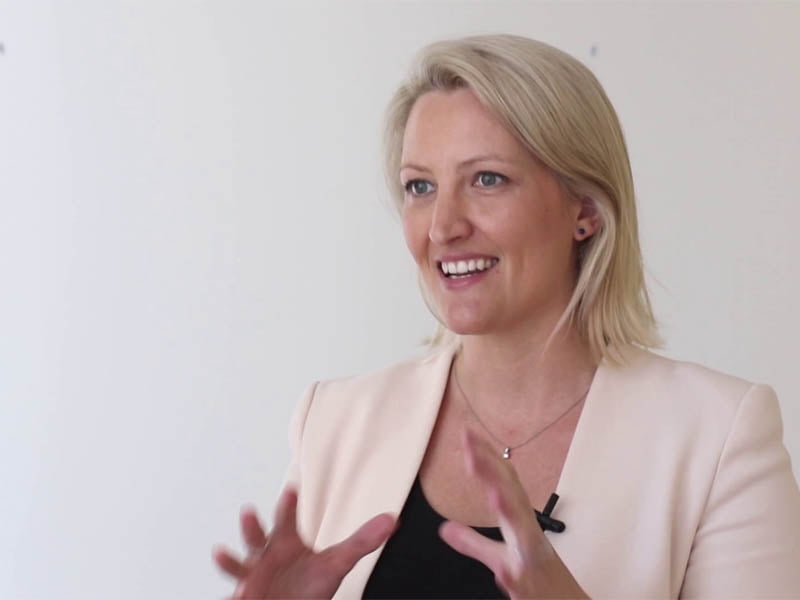There’s a huge potential for Australia’s drone industry because in many ways we are world leaders in drone regulation and usage, but one of the biggest challenges this nascent industry faces is a lack of cohesion, says Dr Catherine Ball, associate professor at the Australian National University.
Dr Ball works across global projects where emerging technologies meet humanitarian, education and environmental needs. She’s enthusiastic about the potential of drones, and an advocate for an Australian drone industry.
“The drone sector is not actually a sector of its own right,” Dr Ball says. “There are drones in pretty much every industry sector possible, but it’s been really difficult to build metrics around the success of the drone industry.”

In a move to create some focus and cohesion for the drone industry Ball five years ago launched the World Congress of Drones & Robotics. The latest is being held at the Brisbane Convention and Exhibition Centre this week.
The low end of the drone industry received a huge boost two years ago when the Civil Aviation Safety Authority (CASA), the body responsible for regulating Australia’s air space, removed some of the restrictions on drones weighing less than 2kg enabling anyone to fly them without needing to train and gain a licence.
However, usage is still tightly regulated, which limits applications. Operators must be able to maintain sight of the drone at all times and keep it within 500 metres.
As a result of this regulation she says the small drone market is now a largely saturated, replacement market and the potential for growth lies in uses for larger, long range drones, where regulations are much stricter and still being developed.
However it’s the fact that Australia has a regulatory regime permitting use of large beyond-line-of-sight drones that has enabled the country to become a world leader.
Australia leads in drone regulation
“Australia is the only place in the world where you can get a license to operate a commercial drone delivery service,” Dr Ball says. “Everywhere else, you have to get an exemption from the regulations, and generally you are restricted to trials on military bases.”
Google, she says, has been making use of this facility to pioneer drone delivery services. Google subsidiary Wing chose Logan in Queensland to launch the world’s first commercial drone delivery service in 2020. It is still operating there and Google is planning to launch in other areas.
However, Dr Ball says many barriers remain to wider use of drone delivery services, in particular access to insurance and to the airspace. She describes insurance as the “silent regulator” of the drone industry.
“If you were looking at a complex drone operation in a city, you are likely to need at least 10 different approvals, or insurances to be able to fly. How do you get approvals from people who own the areas you are flying over, and from government bodies like Transport and Main Roads?”
The challenge of airspace access
Airspace regulation was the subject of much discussion at this year’s World of Drones conference and, says Dr Ball. Whatever regulatory model is put in place, it will have to confer exclusivity on specific air corridors either fulltime or parttime because if drones from different operators use the same air corridors simultaneously, collisions will be inevitable.
She says 5G mobile technology will likely be essential to ensure drones can determine their position, in real time, with sufficient accuracy to stay within their assigned air corridors.
Whatever regulatory model develops, she envisages it being pay-for-use but says the whole issue of airspace regulation for drones is currently hotly debated.
“Will we put drone corridors over areas of lower socioeconomic housing because we don’t want them over our homes. Those questions are being asked right now.”
Home delivery and other services in cities have the potential to be high growth for the drone industry if the airspace access challenges can be overcome.
Dr Ball see other highly beneficial applications that will likely require international agreement on rules and regulations.
“Australia will be responsible for vaccinating the entire Pacific region against COVID-19. We will not be able to do that without drone technology,” she says.
“We will need to put vaccines into drones and make sure they are kept cold. We will be flying those across Papua New Guinea and Indonesia and the Pacific islands to get people vaccinated fast enough.”
Another thing holding back Australia’s drone industry is a lack of metrics. CASA’s database of people holding a licence to operate a remotely piloted aircraft (drones greater than 2kg) has more than 2000 names.
Australian company, Mirragen Unmanned Systems, maintains an Australian Drone Directory. It lists drone businesses in every state under a dozen distinct categories, but there is no financial and other quantitative data to indicate the current size or growth trajectory of the industry.
Do you know more? Contact James Riley via Email.
